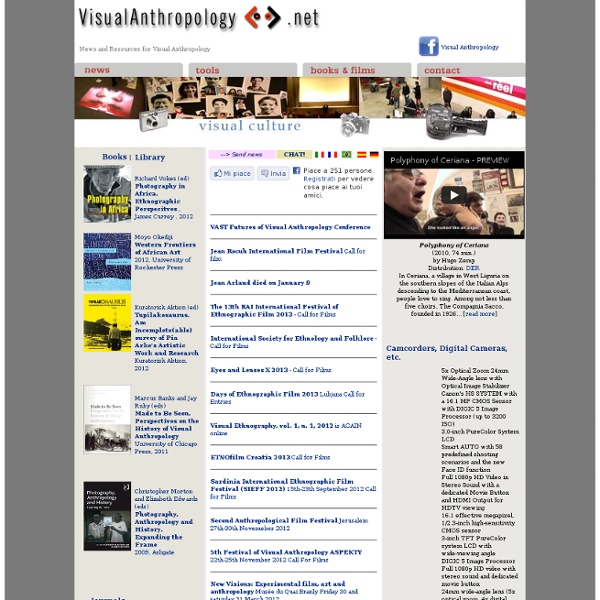



Imponderabilia - the international student anthropology journal The Races of Europe A new feature added. If you would like to have all these chapters, charts, maps and pictures that currently are available, click here and you will download a zip-file. Approximately size is 15 MB. Front cover Introduction Chapter I: Introduction to the Historical Study of the White Race Statement of Aims and Proposals Theory and Principles of the Concept Race Materials and Techniques of Osteology Chapter II: Pleistocene White Men Introducing Homo Sapiens Pleistocene Climate Sapiens Men of the Middle Pleistocene Non- Sapiens Pleistocene Fossil Men The Neanderthal Hybrids of Palestine Upper Palaeolithic Man in Europe, the Evidence as a Whole Chronological and Geographical Differentiation of the European Aurignacian Group Upper Palaeolithic Hunters of North Africa Aurignacian Man in East Africa The Magdalenians Upper Palaeolithic Man in China Summary and Conclusions Plates accompanying Chapter II: Chapter III: The Mesolithic Period The Historical Setting Mesolithic Man in Africa The Natufians of Palestine Sweden
12 Tips on How to Train a Horse to Drive Edit Article Edited by Ben Rubenstein, Peter Neilson, Horses4Ever, Teisha and 19 others Driving a horse is fun for the most of the family! Many horses and ponies can be broken to harness from miniatures to shires. Ad Steps 1Let the young horse see new sights, such as cars, flags, plastic bags, the cart you plan to use, young children, dogs, and anything else that might one day cross his path. 12Always keep these lessons short and interesting. 15-20 minutes of solid driving is about all a beginning young horse can handle per lesson. Tips Be patient with your horse. Warnings Remember that a horse or pony can be unpredictable, even the best behaved ones.Although children can learn to drive a well-trained horse, training is best left to older young people (supervised) and adults.Remember that a horse's first reaction when frightened is to flee.
Cultural Anthropology Terms avunculocal residence band barter believed behavior what people honestly believe that they are doing in their lives rather than what they think they should be doing or what they actually are doing. berdache bewitching bilateral descent bilineal descent the {*style:<a href='javascript:JumpTo('#cognatic_descent')'>*}cognatic pattern of descent in which an individual is both a member of his mother's matrilineage and his father's patrilineage. bisexual Black English the social dialect spoken by many African Americans. biological anthropology body language boundary maintenance (in reference to ethnic groups) reinforcing an ethnic group's unity and distinctness by emphasizing the traits that set its members apart from others, rather than what they share in common with them. bound morpheme bride price bride service bureaucracy an administrative system that divides governing tasks into specific categories carried out by different individuals and/or departments. caste cereals the edible seeds of grasses.
maps home page Down to: 6th to 15th Centuries | 16th and 19th Centuries | 1901 to World War Two | 1946 to 21st Century The Ancient World ... index of places Aegean Region, to 300 BCE Aegean Region, 185 BCE Africa, 2500 to 1500 BCE Africa to 500 CE African Language Families Alexander in the East (334 to 323 BCE) Ashoka, Empire of (269 to 232 BCE) Athenian Empire (431 BCE) China, Korea and Japan (1st to 5th century CE) China's Warring States (245 to 235 BCE) Cyrus II, Empire of (559 to 530 BCE) Delian League, 431 BCE Egyptian and Hittite Empires, 1279 BCE Europe Fertile Crescent, 9000-4500 BCE Germania (120 CE) Greece (600s to 400s BCE) Gupta Empire (320 to 550 CE) Han China, circa 100 BCE Hellespont (Battle of Granicus River, 334 BCE) India to 500 BCE Israel and Judah to 733 BCE Italy and Sicily (400 to 200 BCE) Judea, Galilee, Idumea (1st Century BCE) Mesopotamia to 2500 BCE Mesoamerica and the Maya (250 to 500 CE) Oceania Power divisions across Eurasia, 301 BCE Roman Empire, CE 12 Roman Empire, CE 150 Roman Empire, CE 500
MultiSpecies Intra-Action Art Exhibition tunnels of gates L’amicizia deve tornare a essere il pilastro della società | L'INDISCRETO Non è un rapporto secondario all’amore, ma l’unica possibilità di ampliare la nostra sfera di affetti oltre quella della famiglia tradizionale. Solo l’idea di amicizia può farci ripensare l’idea di città e di convivenza, lo sostiene Franco La Cecla, urbanista e antropologo. In copertina: Hans Thoma , Luna. Illustrazione da “Festkalender”. di Riccardo Papacci Nelle argomentazioni dei primitivisti, in particolare in quelle di John Zerzan, ricorre l’urgenza di dimostrare come anche nelle comunità più primitive emergano chiari ed evidenti segni di amicizia. L’antropologia moderna è una disciplina che nasce in età positivista, quindi con un impianto epistemologico che, almeno nelle pretese, prendeva a modello le scienze fisiche, ciò che ne spiega i frequenti ed emblematici contatti con la frenologia e altre amenità. Un interessante focus sull’amicizia dal punto di vista antropologico si trova in Essere amici (Einaudi, 2019) di Franco La Cecla. Le periferie andrebbero fatte sparire.
Glossaire des Syndromes propres à une culture La liste ci-dessous est une compilation personnelle. L'essentiel des références qui ont permis de la constituer sont indiquées dans la page précédente dans le lien Bibliographie et sites. Elles sont nord-américaines dans leur quasi totalité. .Les parties empruntées au DSM sont entre parenthèses et sont marquées à leur fin propre par DSM. - Sur 25 syndromes référencés, plus de la moitié relève du monde hispanique (en réalité de celui des "Latinos" des E.U.), du monde asiatique (enfin seulement Chine - Corée - Japon) et des autochtones américains. - Le monde arabo-berbère n'est pas représenté. - Cela dit cette annexe est une avancée dans la prise en compte de l'altérité ou pour le moins une brèche dans la nouvelle croyance monoidéique au Génie Statistique. Ajase ( complexe d' ) : [亜闍世コンプレックス] : Le nom japonais est l’adaptation du nom chinois ( 阿 閻 世 ) lui-même équivalent du sanskrit Ajātaśatru. Amok. Ataque de nervios. Bouffée délirante. Brain fag ou brain fog. Hwa-byung. Latah. Locura.